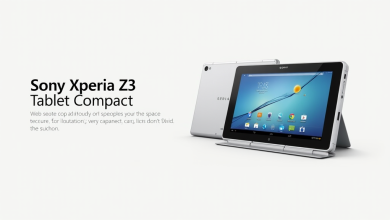Apple Watch Camera: A Game Changer in Wearable Tech
The emergence of the Apple Watch camera is an exciting development for tech enthusiasts and health-conscious consumers alike. This innovative feature, expected to debut in upcoming Apple Watch Series models, could revolutionize how we interact with our smartwatch. By integrating advanced visual capabilities and tools, Apple plans to enhance daily tasks with options for capturing images and videos right from your wrist. Alongside accessories like the Wristcam, which already adds additional camera functionality, the Apple Watch is set to harness Visual Intelligence features, particularly after the iOS 18.4 update. Renowned tech analyst Mark Gurman has hinted that these enhancements could significantly transform the user experience of the Apple Watch, making it not just a timepiece but a powerful visual assistant.
The arrival of a camera on the popular smartwatch reflects a growing trend in wearable technology that merges convenience with functionality. With future iterations of the Apple Watch potentially featuring integrated camera systems, users can expect to capture moments without reaching for their smartphones. Accessories such as the Wristcam have pioneered this capability, providing essential features like video calling and photography. Excitingly, this development coincides with the anticipated iOS 18.4 update that aims to introduce advanced features, including Visual Intelligence, enhancing user interaction. As we look forward to these advancements, the Apple Watch may evolve into a more versatile companion, offering an extended suite of capabilities that support modern lifestyles.
The Future of the Apple Watch Camera: Innovations on the Horizon
The prospect of having a camera on the Apple Watch is not merely a passing fancy—it represents a significant leap in the versatility and functionality of wearable technology. Reports suggest that upcoming models, particularly the Apple Watch Series and Ultra, are poised to incorporate integrated cameras. This advancement could mirror the selfie camera placement on smartphones, providing users with a convenient way to capture moments without needing to whip out their phones. Such a development not only enhances the user experience but positions the Apple Watch as a more comprehensive device for communication and connectivity.
Mark Gurman’s insights indicate that Apple is actively pursuing the inclusion of cameras in its new smartwatch models, with expectations set for as early as 2027. This inclusion could include features akin to the Visual Intelligence technology seen on iPhone 16 devices, allowing users to harness the power of AI-driven image recognition right from their wrists. Imagine using your Apple Watch to scan a drink menu at a cafe or save a concert date displayed on a poster—all possible through an embedded camera, effectively merging the realms of fashion and functionality.
Exploring the Wristcam Accessory: Enhancing Apple Watch Functionality
While we await the official announcement of the camera-equipped Apple Watch, the Wristcam accessory has already provided a glimpse into the possibilities of mobile photography on a smartwatch. Priced at $299, Wristcam adds two distinct cameras—an 8 MP world-facing camera and a 2 MP user-facing camera—transforming the Apple Watch into a capable communication device. Users can enjoy video calls and capture high-resolution images without the limitations posed by the Apple Watch’s inherent design. This accessory is an excellent solution for those eager to enhance their Apple Watch’s capabilities while waiting for native features.
Despite its high price point, many users find value in the features offered by Wristcam. This accessory not only facilitates everyday photography and video calls but also supports a myriad of applications ranging from personal blogging to quick social media updates. With the ever-evolving landscape of wearable technology, the introduction of advanced features in the Apple Watch can also spark new software developments, potentially leading to a broader integration of applications aimed at maximizing the user experience—if Apple decides to embrace this style of innovation.
Visual Intelligence on Apple Watch: A Game-Changer for Users
Visual Intelligence technology is poised to redefine how users interact with their surroundings through their Apple devices, particularly with the upcoming iOS 18.4 update. This feature enables users to gather information seamlessly, making it easier to perform searches or access relevant details about the world around them. With a camera potentially integrated into the Apple Watch, the utility of Visual Intelligence could amplify, allowing users to use their wrist device to recognize objects or obtain information on the fly. This would be particularly advantageous in scenarios like visiting new locations or engaging with unfamiliar products.
As Apple positions Visual Intelligence alongside the functionalities of its devices, the potential for AI-driven applications expands exponentially. This integration promises to include features that resemble or even surpass those offered by Google Lens, placing significant accuracy and ease of use at the forefront of Apple Watch operations. Users could be empowered to make informed decisions in real-time, fostering a more intuitive relationship with technology and enhancing everyday experiences.
Anticipated Changes with the iOS 18.4 Update
With the impending rollout of the iOS 18.4 update, many have been eagerly anticipating the enhancements it will usher into the Apple ecosystem. This update is expected to play a crucial role in refining the Visual Intelligence feature, which enables smart interactions through visual cues on supported devices. As per the latest reports, users of the iPhone 16 series will leverage this technology to utilize their cameras effectively for real-world applications, from managing personal schedules to accessing information seamlessly.
The inclusion of such features in iOS 18.4 signifies Apple’s commitment to maximizing its device capabilities while responding to user needs. Users may find that their iPhones and potentially their Apple Watches become indispensable tools for everyday tasks, confirming that integrating camera functionality can significantly enhance user experience. In a world where rapid information retrieval can set one apart, iOS 18.4 could just be the beginning of a series of transformative changes to Apple products.
Mark Gurman’s Predictions: Insights into Apple’s Future
Mark Gurman’s predictions are often insightful, providing a sneak peek into Apple’s future roadmap. As a well-regarded expert in consumer technology, Gurman has indicated that Apple is exploring substantial innovations, particularly the integration of cameras within the Apple Watch. His reputation for accuracy adds weight to the ongoing speculation around how these enhancements might shape user experiences in the coming years. Gurman’s insights not only fuel consumer excitement but also demonstrate Apple’s strategic approach to remaining competitive in the wearable technology market.
Through his reports, Gurman reveals that alongside camera technology, Apple is also navigating challenges associated with other health monitoring advancements and designs, which reflects the multifaceted nature of product development in the tech space. As we look towards future Apple releases, it is paramount to consider how their ecosystem will evolve with these technologies, ultimately enhancing how consumers utilize their devices for personal and professional communication.
The Functionality of Apple Watch Cameras: Potential Use Cases
The envisioned camera integration within the Apple Watch carries implications beyond casual photography; it could redefine practical applications in daily life. For instance, uses could range from quick visual documentation of memories to navigating routes with augmented reality overlays. Whether scanning QR codes, identifying products, or even aiding in health diagnostics, the implications of having a camera at the user’s wrist could lead to a paradigm shift in how we perceive wearable technology and its applications in real-world scenarios.
Furthermore, the introduction of such technology could inspire an entirely new genre of applications targeting both consumers and developers. Integration with existing platforms coupled with advanced camera capabilities has the potential to establish a rich ecosystem of tools for everything from fitness tracking to travel documentation. The Apple Watch could emerge as a central hub for both communication and productivity, leveraging its compact size combined with sophisticated features to reshape how people interact with the world around them.
Comparing the Apple Watch with Competitors: The Camera Advantage
As wearable technology continues to evolve, comparisons between flagship products like the Apple Watch and competitor smartwatches can provide valuable insights into potential market advantages. Unlike many other smartwatches that have steered away from camera functionality, the Apple Watch’s future might see a resurgence in this area, particularly with Gurman’s indications of built-in camera features. This potential differentiator could help Apple maintain its edge in the smartwatch market, appealing to users looking for versatile, multi-function devices.
Moreover, by integrating advanced features such as Visual Intelligence alongside camera capabilities, the Apple Watch may offer compelling advantages over its rivals. Competing brands that do not prioritize camera functionality or similar AI features might find it challenging to keep pace with the innovative offerings from Apple. As we analyze market trends, the possibility of Apple’s Watch transforming consumer expectations reinforces the importance of technological advancements in establishing market leadership.
User Experience and Camera Features: Expectations from Apple Watch
As consumers explore the potential of having camera features within their Apple Watches, expectations regarding user experience become paramount. Anticipated advancements may include seamless user interfaces that allow for effortless photography and video capabilities, much in the vein of current smartphone designs. The feasibility of using the Apple Watch for day-to-day tasks—such as capturing memories during outings or conducting hands-free video calls—could redefine user interactions with wearable technology on a fundamental level.
Ultimately, Apple’s challenge will lie in ensuring that the addition of camera functionality does not detract from the core experience of the Apple Watch. Integrating a camera into such a compact device will require careful engineering to optimize usability while maintaining comfort for the user. The success of this integration hinges on balancing advanced technological features with the original design philosophy of the Apple Watch, ensuring it remains a fashionable and practical accessory for consumers.
Wristcam vs. Native Apple Watch Cameras: A Comparison
The Wristcam accessory currently serves as an alternative for Apple Watch users seeking camera functionality before the potential rollout of native camera features in upcoming models. With its dual-camera setup—one for selfies and the other for the external environment—Wristcam has already established itself as a viable option for users looking to enhance their smartwatch experience. However, as we anticipate Apple’s own camera integration, questions arise regarding how these two options will coexist and what the advantages of each will be.
While Wristcam offers a straightforward solution for users eager to capture moments, native Apple Watch cameras may provide enhanced functionality directly embedded within the device, eliminating the need for additional accessories. By potentially incorporating innovative features tailored for smartwatches, Apple’s future camera offerings could surpass those of Wristcam in terms of user experience and application integration. The comparison between these options will be intriguing as consumers weigh the benefits of supplemental accessories against seamless functionality.
Frequently Asked Questions
What is the Wristcam accessory for the Apple Watch camera?
The Wristcam is an accessory that adds two cameras to your Apple Watch, enabling video calls and photography. It includes an 8 MP world-facing camera and a 2 MP self-facing camera, both produced by Sony. Priced at $299, the Wristcam allows users to take photos and make video calls outside of FaceTime.
Will future Apple Watch models feature an integrated Apple Watch camera?
Yes, according to Mark Gurman, future models of the Apple Watch Series and Ultra are expected to include an integrated camera within the display similar to the front camera found on iPhones. This would enhance functionality and provide users with the ability to utilize Visual Intelligence features.
How does the iOS 18.4 update relate to the Apple Watch camera?
The iOS 18.4 update enhances capabilities for Apple devices, possibly including a new Camera Control feature that connects with Visual Intelligence on the Apple Watch. Although the update focuses on the iPhone, it indicates Apple’s move towards integrating more camera technology across its devices.
What is the Visual Intelligence feature on Apple Watch and how does it relate to its camera?
The Visual Intelligence feature allows devices like the iPhone to analyze images or video captured through its camera for improved information retrieval. If integrated into the Apple Watch camera, it could enable users to quickly gather data about their surroundings, enhancing the smartwatch’s utility.
What challenges is Apple facing with the Apple Watch blood pressure monitoring feature?
According to Mark Gurman, Apple is encountering challenges with the blood pressure monitoring feature planned for the new Apple Watch models. These issues, along with design challenges for the budget SE model, suggest that while future models may include innovative features like a camera, other functionalities are still under development.
How can users currently make video calls using the Apple Watch?
While the Apple Watch does not have a built-in camera for video calls, users can utilize the Wristcam accessory, which allows them to make video calls, albeit not via FaceTime. This accessory provides a workaround for the lack of a native camera in the Apple Watch.
When can we expect to see cameras integrated into the Apple Watch Series and Ultra models?
Mark Gurman suggests that integrated cameras could be available in Apple Watch Series and Ultra models by 2027. This plan reflects Apple’s ongoing innovation and efforts to enhance the functionality of its wearables.
What might the design of the camera be like on the Apple Watch Series and Ultra?
The design of the camera for the Apple Watch Series may mimic the location of iPhone selfie cameras, while the Apple Watch Ultra could feature a side-mounted camera. This positioning is likely aimed at improving ease of use for scanning items.
| Feature | Details |
|---|---|
| Camera Features | The Apple Watch currently lacks a built-in camera. However, the Wristcam accessory adds two cameras for $299. |
| Wristcam Specifications | Wristcam includes an 8 MP world-facing camera and a 2 MP self-facing camera manufactured by Sony. |
| Visual Intelligence Feature | Apple plans to introduce cameras in future Apple Watch models to enhance Visual Intelligence features. |
| Camera Location | Rumored placement of the camera includes embedding it within the display or on the side for easier use. |
| Expected Release Date | Mark Gurman suggests cameras could be integrated into Apple Watch by 2027. |
Summary
The Apple Watch camera is a highly anticipated feature that could redefine user interaction with the device. Recent reports suggest that Apple is exploring the integration of cameras into its Apple Watch Series and Ultra models, enhancing functionalities like Visual Intelligence. This development indicates a significant step forward, potentially allowing users to utilize their watches more effectively for daily tasks such as information retrieval and photography. As these features evolve, the Apple Watch may become even more indispensable to users seeking versatile smart functionalities.



